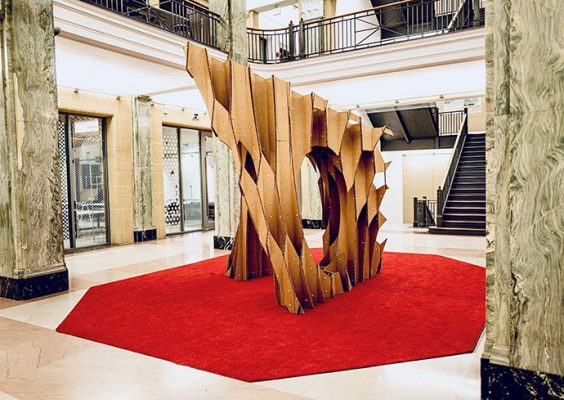Swinging Into Summer: Syracuse International Jazz Fest Returns With Star Power, Student Talent and a Soulful Campus Finale
Get ready for the sweet summer sounds of jazz in the city and on campus. The University is again a sponsor of the Syracuse International Jazz Fest, a five-day celebration of world-class jazz music and community spirit, taking place June…


 If you’ve recently visited Slocum Hall, you likely would have seen the cardboard structure standing 10 feet tall, wide and long in the middle of the central atrium space. Dubbed the “Honeycomb Folds Mockup,” the pavilion is part of an ongoing series and investigation on folding and origami fabrication techniques in concrete by School of Architecture associate professors Roger Hubeli and Julie Larsen, founding partners of
If you’ve recently visited Slocum Hall, you likely would have seen the cardboard structure standing 10 feet tall, wide and long in the middle of the central atrium space. Dubbed the “Honeycomb Folds Mockup,” the pavilion is part of an ongoing series and investigation on folding and origami fabrication techniques in concrete by School of Architecture associate professors Roger Hubeli and Julie Larsen, founding partners of